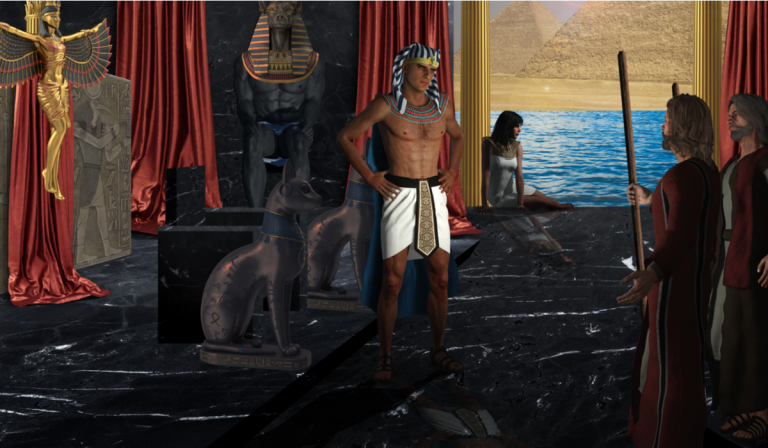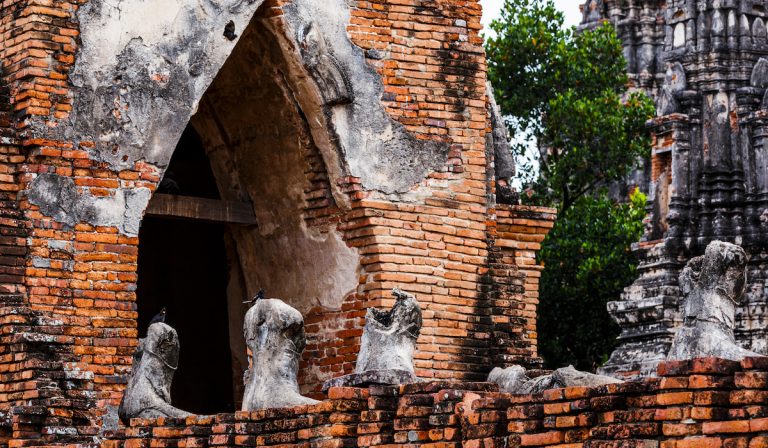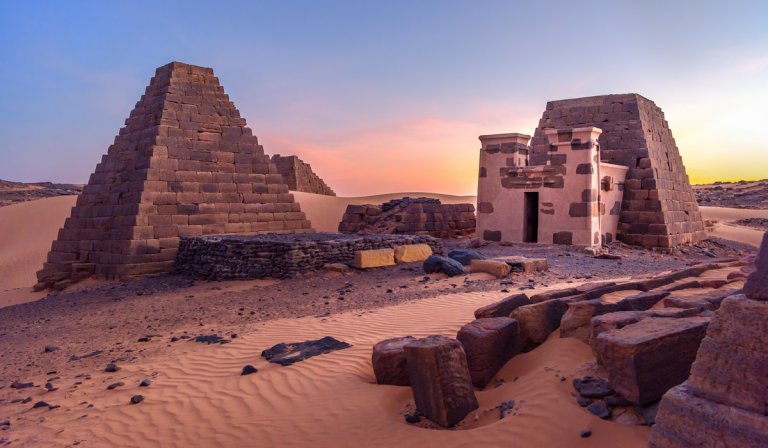5 Differences Between Archaeologists and Paleontologists
Since both jobs involve collecting and assessing historical items, one may think archaeologists and paleontologists play the same roles. But if you scratch beyond the surface, you will find that these jobs are quite different.
So, what is the difference between archaeologists and paleontologists? While the roles of both types of professionals involve studying historical items, the main difference is the goal of their study.
Archaeologists try to figure out the way of life and culture of people from the past. However, paleontologists try to understand all living things that have existed in the past.
The differences between both groups of professionals extend beyond the summary above. In the rest of this article, we discuss five differences between archaeologists and paleontologists.
What They Do
Archaeologists practice archaeology, while paleontologists practice paleontology.
Archaeologists
Archaeology involves the assessment of heritage sites, artifacts, and architectural remnants. The goal of studying these items is to elucidate and understand human culture throughout history.
Archaeologists assess historical remnants that can offer insight into the lives and cultures of humans who have lived in the past.
Some archaeologists go out to remote areas and conduct digs or searches to study and collect artifacts. Some others may study monuments and structures present in areas that are part of current civilizations around the world.
Paleontologists
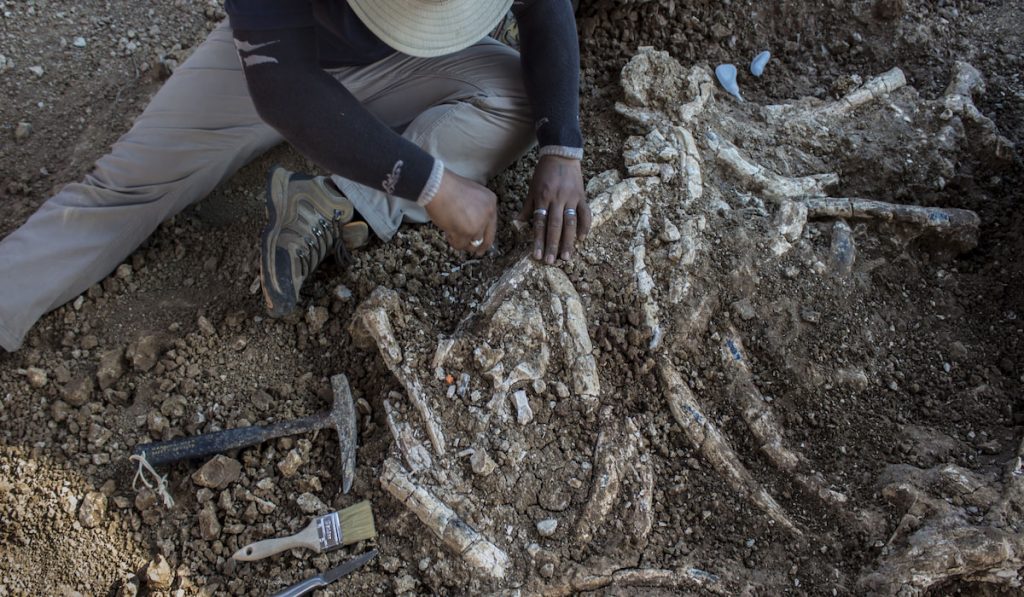
Paleontology involves the study of historical fossils from all life forms, including plants and animals. The goal of studying these items is to understand how the Earth and the life on it existed.
Paleontology also involves figuring out the changes that have happened on Earth over time.
Paleontologists study the fossils from living organisms that have existed on Earth. Their job is to assess, observe, classify, and describe evolutionary patterns, environmental changes, and much more based on the information they get from fossils.
The Historical Items They Work With
While archaeologists study artifacts and features, paleontologists study fossils.
Archaeologists
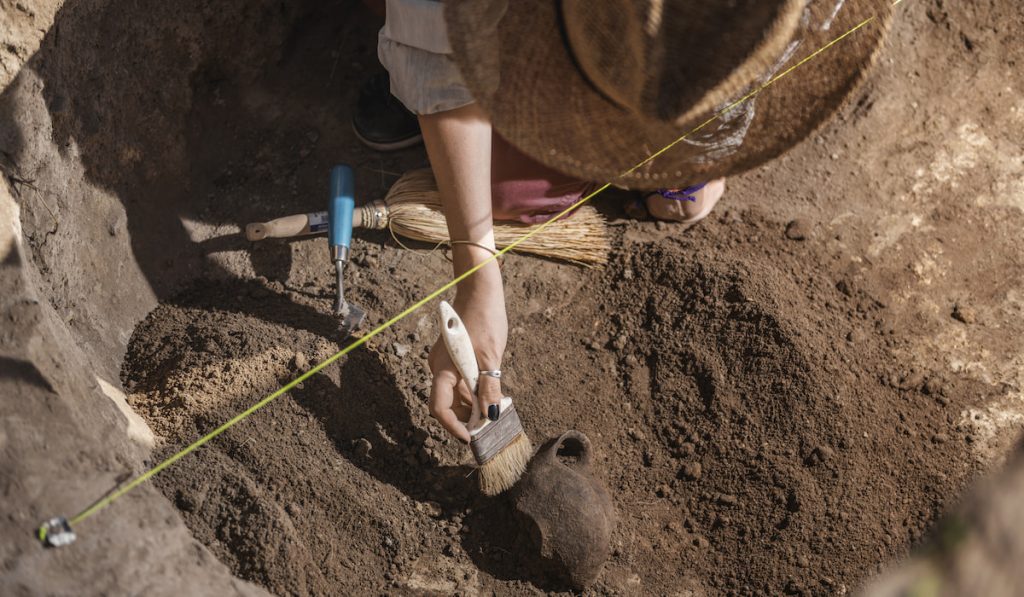
The portable items or remains archaeologists study are called artifacts. They include tools, pottery, clothing, bones, decorations, buttons, jewelry, written materials, and similar items.
The non-portable items archaeologists study are called features. Features include buildings, roads, bridges, post-holes, caves, and other similar immovable items.
Paleontologists
Paleontologists study fossils, which are the remains of living organisms found in rock minerals or geologic deposits. Fossils may be found in a petrified state, or they may come as impressions in rocks.
Examples of fossils include shells, bones, teeth, leaves, exoskeletons, and stone imprints of microorganisms.
Degree Requirements
Archaeologists
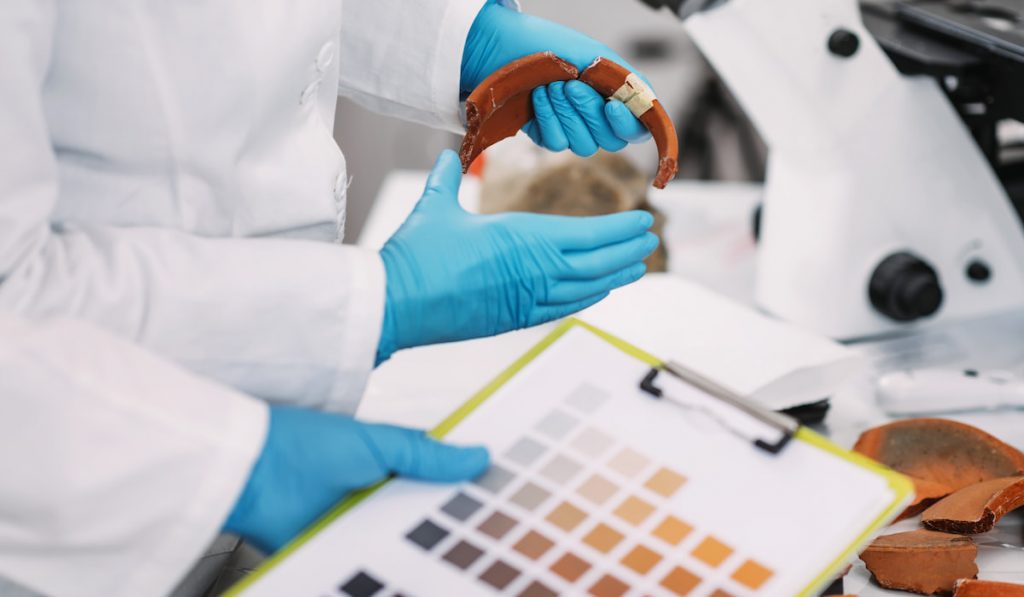
To become an archaeologist, one needs a minimum of a 4-year college degree, whether BS or BA. Archaeologists major in either archaeology or anthropology.
Besides the college degree, archaeologists learn laboratory techniques. They are also trained in archaeological fieldwork procedures.
People who only get a 4-year bachelor’s degree in archaeology or anthropology can generally only work in the field or as lab assistants.
For other positions, one may need to get an advanced degree such as a master’s degree or a doctorate. Also, to register as an RPA (Registered Professional Archaeologist), one needs an advanced degree. In the absence of such degrees, one can only register as an RA (Registered Archaeologist).
Paleontologists
To become a paleontologist, you need a minimum of a bachelor’s degree. However, more times than not, you may need an advanced degree to get a job because of the competition.
For positions in post-secondary academia, paleoceanography, and paleontology and comparative morphology, one needs a Ph.D.
For positions in research, ichnology, paleobotany, paleontology lab management, and vertebrate paleontology, one needs a master’s degree.
For other positions, a bachelor’s degree would suffice. But an advanced degree offers an edge.
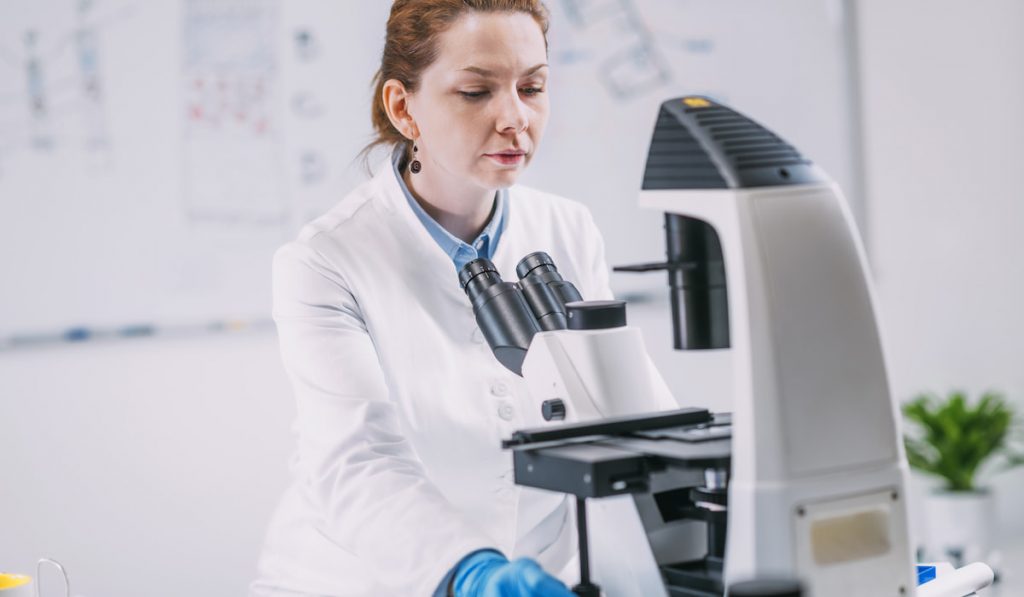
Required Knowledge
Archaeologists
Extensive knowledge of ancient history, archaeology, and anthropology is vital to a career in archaeology.
Anthropology and ancient history are vital to archaeologists because they infer historical human culture from artifacts and features.
Then their knowledge of archaeology helps them detect and analyze artifacts and features.
Paleontologists
Broad knowledge of geology and biology is a vital requirement for paleontologists. Biology is crucial to them because their work involves studying the remains of living organisms. Then geology is essential because they seek out fossils and try to puzzle out changes on Earth over time.
Besides biology and geology, paleontologists may also benefit from a good knowledge of other natural science courses. Some of these include chemistry, statistics, physics, calculus, and computer science.
The Major Divisions Within These Professions
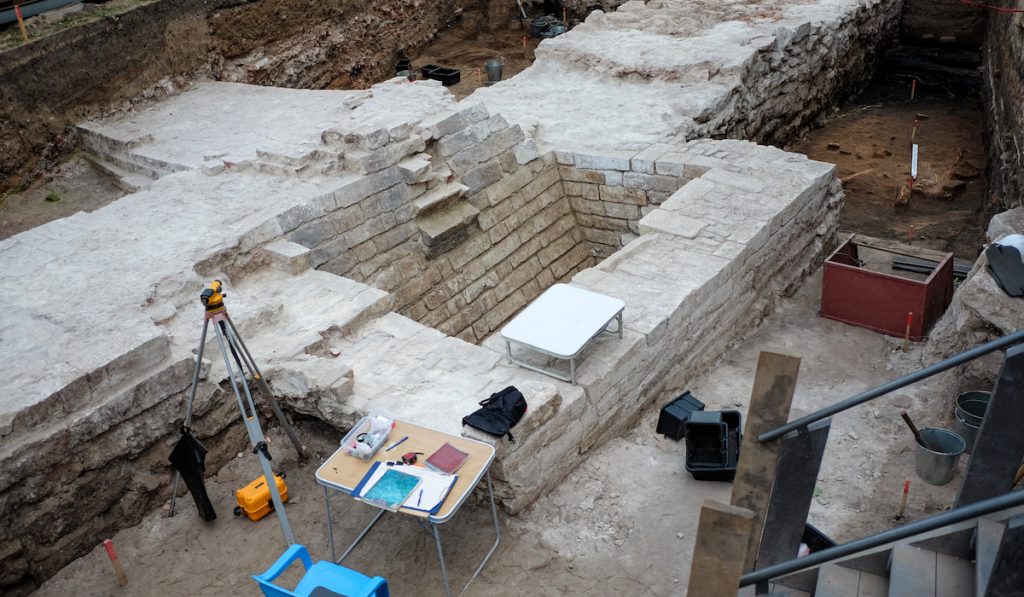
Archaeology
Archaeology, the profession of archaeologists, has two main divisions: Classical Archaeology and Anthropological Archaeology.
Classical Archaeology, also known as Historical Archaeology, deals with artifacts and features from ancient Roman and Greek cultures. This branch of archaeology also investigates the culture of the ancestors of ancient Rome and Greek.
Anthropological Archaeology, also known as Prehistoric Archaeology, focuses on human cultures before historical records began.
Paleontologists
Paleontology has three main divisions: Paleobotany, Paleozoology, and Micropaleontology.
Paleobotany deals with the study of plant fossils, paleozoology focuses on animals fossils, and micropaleontology deals with microscopic fossils.
| Archaeologist | Paleontologist | |
| What They Do | They assess historical remnants that can offer insight into the lives and cultures of humans who have lived in the past. | They try to understand evolutional patterns, environmental changes, and much more based on the information they get from fossils. |
| The Historical Items They Study | Artifacts and features | Fossils |
| Degree Requirements | The minimum requirement is a 4-year college degree, whether BS or BA. | The minimum requirement is a bachelor’s degree. However, more times than not, one needs an advanced degree to be competitive. |
| Required Knowledge | Extensive knowledge of ancient history, archaeology, and anthropology. | Broad knowledge of geology and biology and some other natural sciences. |
| Major Divisions of Their Professions | Classical Archaeology and Anthropological Archaeology. | Paleobotany, Paleozoology, and Micropaleontology. |
Resources
- https://www.paesta.psu.edu/book/earth-systems-science-introduction/definitions/paleontology-vs-archaeology-vs-anthropology
- https://www.nationalgeographic.org/encyclopedia/archaeology/
- https://www.nationalgeographic.org/encyclopedia/paleontology
- https://www.saa.org/about-archaeology/archaeology-as-a-career
- https://askanydifference.com/difference-between-paleontologist-and-archaeologist/
- https://www.paesta.psu.edu/book/earth-systems-science-introduction/definitions/paleontology-vs-archaeology-vs-anthropology
- https://blogs.ucl.ac.uk/museums/2012/09/18/how-to-tell-an-archaeologist-from-a-palaeontologist/
- https://rpanet.org/how-to-apply
- https://jobs.lovetoknow.com/careers-paleontology
- https://www.environmentalscience.org/career/paleontologist
- https://kids.britannica.com/students/article/archaeology/272936
- https://paleontology.fandom.com/wiki/Paleontology
- https://www.uni-heidelberg.de/en/study/all-subjects/classical-archaeology
- https://ifrglobal.org/prehistoric-archaeology




